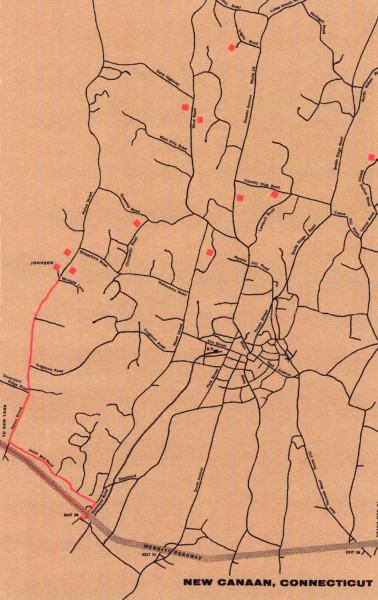Elaine Lustig Cohen
The first survey to explore the relationship between Elaine Lustig Cohen’s early paintings and pioneering design projects.
In 1955, Lustig Cohen began a graphic design practice that integrated the aesthetics of European modernism within a distinctly American visual idiom for her diverse clientele of publishers, corporations, cultural institutions, and architects. Her first client was Philip Johnson, who commissioned her to work on the lettering and signage for the Seagram Building. The two forged an important bond that resulted in a variety of projects for Yale University, Lincoln Center, and the Sheldon Museum of Art, among others, as well as commissions with John de Menil and the Schlumberger oil company.
As a painter, Lustig Cohen developed a hard-edged style in the 1960s and 1970s that engaged the physicality of the canvas’ flat surface. Employing a simplified formal language that includes solid colors and abstract geometric shapes, her paintings allude to her design work as well as the contemporaneous practices of other artists who strove to dissolve the barriers between painting and objecthood.
Co-curated by Cole Akers and Prem Krishnamurthy.
Press
The New York Times
Art in America
Artforum
In 1955, Lustig Cohen began a graphic design practice that integrated the aesthetics of European modernism within a distinctly American visual idiom for her diverse clientele of publishers, corporations, cultural institutions, and architects. Her first client was Philip Johnson, who commissioned her to work on the lettering and signage for the Seagram Building. The two forged an important bond that resulted in a variety of projects for Yale University, Lincoln Center, and the Sheldon Museum of Art, among others, as well as commissions with John de Menil and the Schlumberger oil company.
As a painter, Lustig Cohen developed a hard-edged style in the 1960s and 1970s that engaged the physicality of the canvas’ flat surface. Employing a simplified formal language that includes solid colors and abstract geometric shapes, her paintings allude to her design work as well as the contemporaneous practices of other artists who strove to dissolve the barriers between painting and objecthood.
Co-curated by Cole Akers and Prem Krishnamurthy.
Press
The New York Times
Art in America
Artforum





